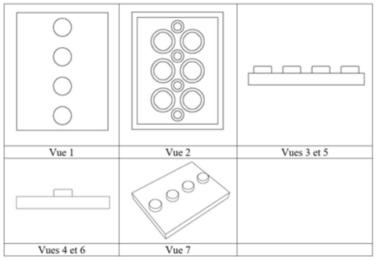

Industrial property protection offers different instruments for the protection of different products in order to reward the creator for their contribution and thus to advance innovation. A patent can protect technical innovations for up to 20 years (Art. 63 EPC, §16 PatG), whereas protection for a design is even granted for up to 25 years (Art. 12 CDR, §27 (2) DesignG).
Patents are granted for technical innovations (Art. 52(1) EPC, §1 PatG) and the design or registered design for appearances of a product (Art. 3(a) GGV, §1 No. 1 DesignG).
Patents are known to be national property rights which, although they can be granted alongside national patent offices through a uniform granting procedure for the contracting states of the European Patent Convention, fall apart into national rights after the granting procedure.
Designs can be registered either with the relevant national authorities or as Community designs with the competent EU authority, the European Intellectual Property Office (EUIPO). A Community design is thus a right that is valid and enforceable throughout the EU. Another major difference to patent law is that a Community design is only examined for formal requirements and can therefore be registered and enforced within a very short time.
A question that often comes up is: Can and should I protect my product with a design in addition to a patent? The legislator has anticipated this question and ensures with different regulations that no exclusively technical innovations are protected by a Community design. Conversely, a patent cannot protect exclusively aesthetic aspects. Thus, it depends on the individual case whether the product is exhausted in its technical features or whether it is distinguished by further, especially aesthetic aspects.
In a recent judgment, the General Court of the European Union (EGC) has intensively dealt with the rules on the exclusion of exclusively technical features in Community designs, i.e. designs which have EU-wide validity. In particular, the EGC discussed previously undecided questions regarding exceptions to the exclusion of technical aspects, thus providing further clarity for market players in the EU and, as a result, strengthening the holders of Community designs.
In order to prevent the monopolization of technical innovation outside of patent law, the legislature has stated in Article 8 CDR:
1. A Community design shall not subsist in features of appearance of a product which are solely dictated by its technical function.
2. A Community design shall not subsist in features of appearance of a product which must necessarily be reproduced in their exact form and dimensions in order to permit the product in which the design is incorporated or to which it is applied to be mechanically connected to or placed in, around or against another product so that either product may perform its function.
3. Notwithstanding paragraph 2, a Community design shall under the conditions set out in Articles 5 and 6 subsist in a design serving the purpose of allowing the multiple assembly or connection of mutually interchangeable products within a modular system.
The consequence of Article 8(1) CDR is that Community designs which consist exclusively of features, which are exclusively due to the technical function of the shown product, are open to cancellation, i.e. they are open to be attacked with an application for a declaration of invalidity before the EUIPO.
What is to be understood by a feature that is solely dictated by the technical function of the shown product is not easy to answer and was disputed in case law for a long time. However, in 2018, with its DOCERAM ruling(C-395/16), the European Court of Justice (ECJ) already provided guidelines according to which a corresponding test must be carried out.
Thus, in the DOCERAM judgment, the ECJ held that, in determining whether a feature of a product is solely dictated by a technical function of the shown product, what matters is whether that technical function is the only factor that led the designer to choose a particular appearance feature of that product, while other considerations - in particular those related to the visual appearance of the product - played no role in the choice of that feature (para. 26, ECJ C-395/16).
Thus, it is often not sufficient to show that there are alternative design possibilities for a feature in order to prove that the feature is based on aesthetic considerations. Otherwise, it would be possible to extend the protection of technical innovation beyond patent law, in particular to extend it. It must therefore be objectively demonstrable that further considerations played a role in the design of the features.
Even if not all features of the Community design in question fall under Art. 8 (1) CDR, it still has an important meaning. For the examination of novelty and individual character, which are the central requirements for protection under design law, only those features are taken into account which are not solely dictated by the technical function of the protected product (Ruhl / Tolkmitt, Gemeinschaftsgeschmacksmuster, 3rd edition 2019, Art. 8 Regulation 6/2002, marginal no. 7).
In addition to the exclusion under Art. 8(1) CDR, Art. 8(2) CDR is intended to prevent manufacturers of products with connecting elements from preventing the competition with substitutable elements products that fit the incorporating product (Ruhl / Tolkmitt, Gemeinschaftsgeschmacksmuster, 3rd edition 2019, Art. 8 VO 6/2002, marginal no. 62.). This includes, for example, printer cartridges, filter cartridges for water filters or parts of a plug designed to be plugged into a socket.
With reference to Art. 8(2) CDR, Art. 8(3) CDR creates a privilege for such designs which serve the purpose of enabling the assembly or connection of a plurality of mutually interchangeable products within a modular system. The best known example of such a modular system are certainly Lego bricks. However, connecting elements in a scaffold, for example, can also be read under this exception.

In its ruling, the EGC had to deal with the question of how the different provisions of Art. 8 CDR relate to each other.
The case underlying the judgment(judgment of 24.3.2021,Case T-515/19) concerned Community design 1664368-0006, which contains this representations:
An application for a declaration of invalidity was filed against the registration, which was rejected by the competent Cancellation Division of the EUIPO. The applicant for the declaration of invalidity filed an appeal against this decision with the EUIPO. The competent Board of Appeal cancelled the registration and thus granted the application for a declaration of invalidity. The Board of Appeal based its decision on the fact that the design exhibits features which are solely dictated by the technical function of the product shown, i.e. it infringes Article 8 (1) CDR.
In the subsequent action before the EGC, the proprietor of the Community design asserted, inter alia, that not all features had been taken into account in the examination as to whether they were solely dictated by the technical function and that the exception under Art. 8(3) CDR would apply, which precludes a declaration of invalidity.
The EGC first dealt with the question whether all features of the Community design are solely dictated by technical functions. In this regard, the EGC refers to the DOCERAM case law already explained above, according to which the following sequence of examination must be observed:
a) Determine the technical function of the product protected by the Community design;
b) Determine the features of the Community design;
c) Determine whether all features are solely dictated by the technical function of the product.
For the Community design reproduced above, the Board of Appeal of the EUIPO had identified the following features:
1) The row of studs on the top of the brick;
2) The series of smaller circles at the bottom of the brick;
3) The two rows of larger circles on the bottom of the brick;
4) The rectangular shape of the brick;
5) The thickness of the walls of the brick;
6) and The cylindrical shape of the studs.
By its action against the decision of the Board of Appeal, the proprietor of the Community design submitted that not all the features had been taken into account in the examination. In particular, it was not taken into account that the design is further characterized by the fact that a very smooth surface is provided on each side of the row of four studs on the upper side.
The EGC agrees with this assessment and clarifies that it is the task of the applicant or the EUIPO to prove that the requirements for exclusion under Art. 8(1) CDR are met.
The EUIPO has defended itself by saying that it is impossible to identify every feature. After all, another feature could always be constructed, which would have to be taken into account. The EGC has clearly rejected this argumentation.
The EGC further clarified that the privileged treatment of connecting parts of a modular system according to Art. 8 (3) CDR also applies if the invalidation was only brought forward on the basis of Art. 8 (1) CDR. Thus, it is emphasized that the privilege of Art. 8 (3) CDR is not an exception of Art. 8 (2) CDR, but an exception of the entire Art. 8 CDR.
The judgment strengthens the position of owners of registered Community designs. With the judgment, the EGC has clarified that it is the task of the invalidity applicant or the EUIPO to list all features and to explain which technical functions these features have exclusively in the context of the function of the protected product. After the ECJ, in the DOCERAM case law, had clearly widened the standard for the declaration of invalidity of Community designs due to features solely dictated by technical considerations, a slight countermovement is recognizable with this judgment of the EGC. As result, if a corresponding objection is to be raised, a complete list of all features of the product shown must be carefully drawn up and it must be plausibly demonstrated that no other considerations can have played a role apart from the technical ones. Here, for example, corresponding advertising by the property right holder highlighting the technical advantages or patent applications could be used as evidence.
Nevertheless, it remains the task of the property right owner to document precisely which other design considerations played a role in the selection of the design in addition to the technical considerations. To this end, it is advisable to document corresponding considerations within the framework of a product development process.
The ruling further clarifies how the exclusion under Art. 8 CDR is to be read and therefore provides further clarity beyond the issue of invalidation of Community designs as to which features are to be considered in the examination of novelty and individual character.